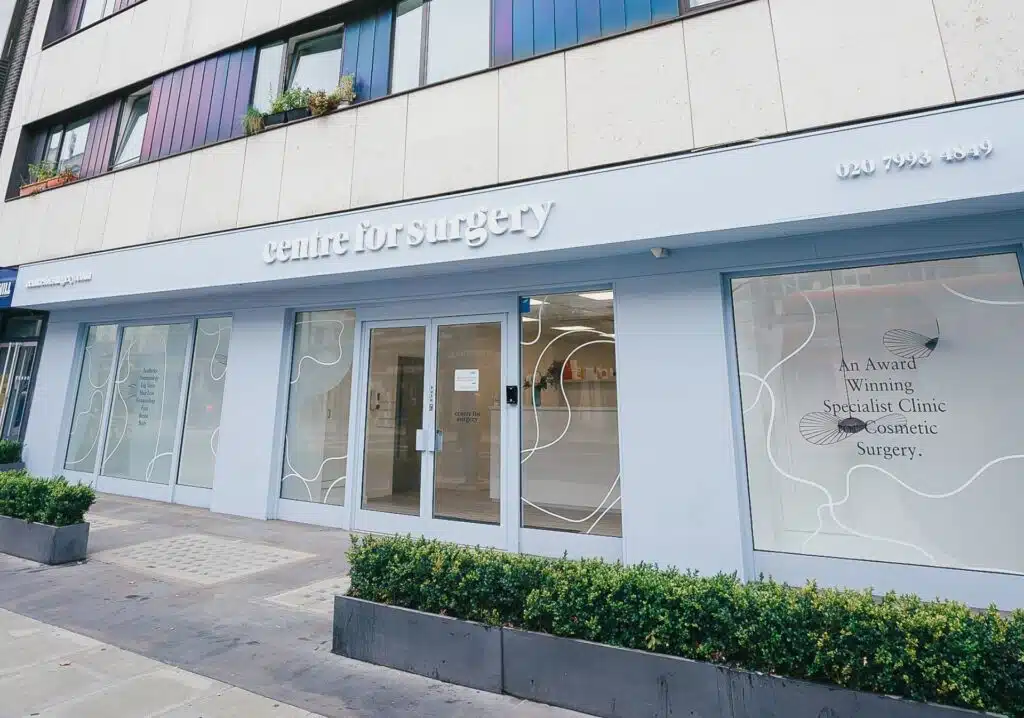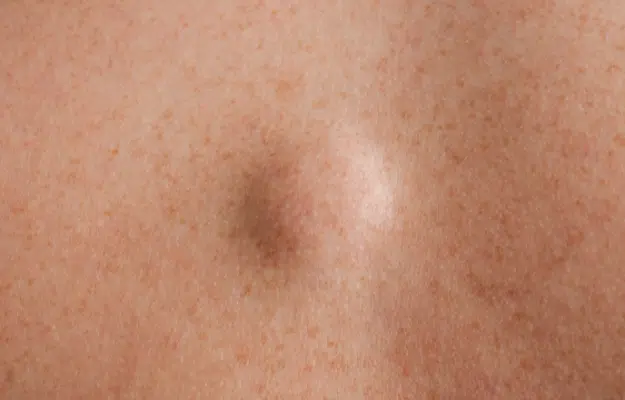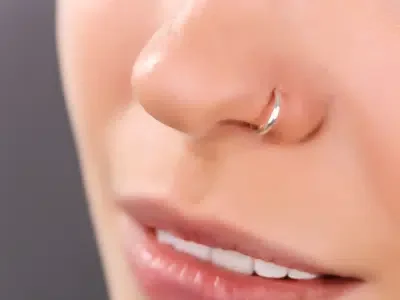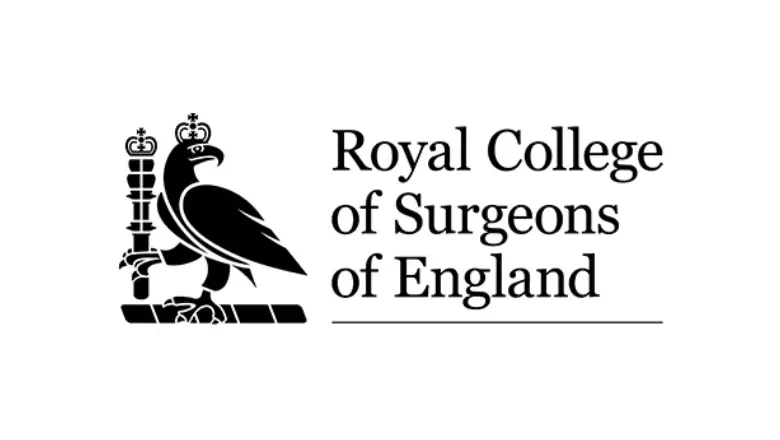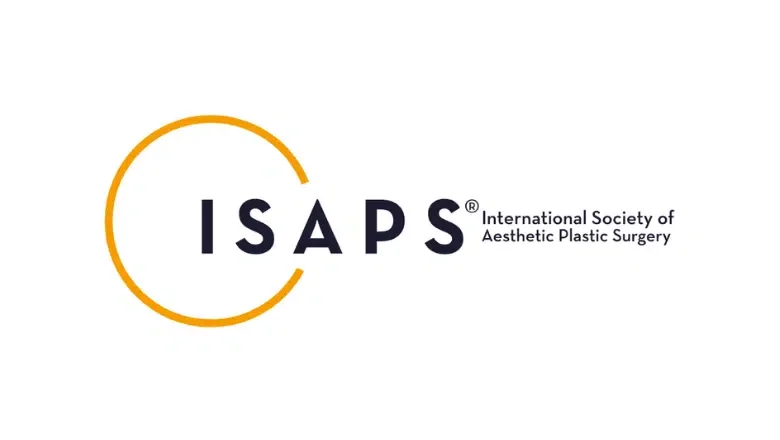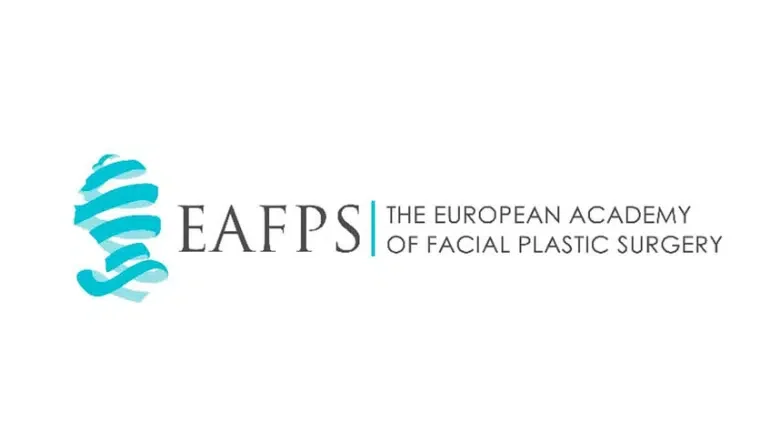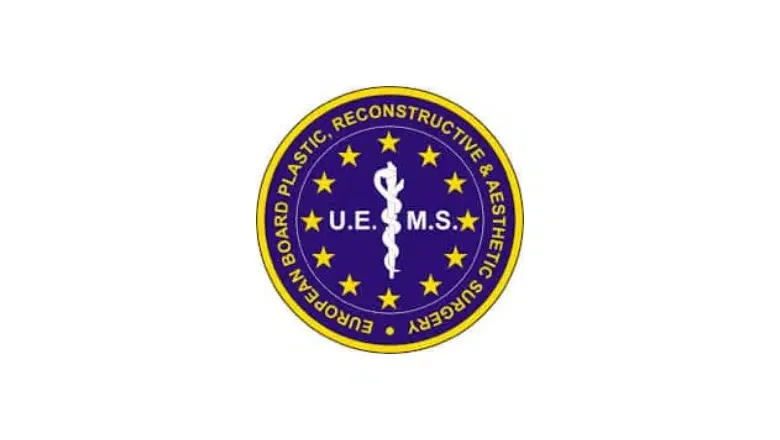Cellulite Treatment using Surgical Subcision in London
Cellulite is a common skin condition that affects many individuals, characterised by the appearance of dimples and divots on the skin. This condition is often the result of fibrous bands that pull down the skin, creating the puckered appearance commonly associated with cellulite. One of the most effective treatments for this condition is a surgical technique known as subcision.
Subcision is a specialised procedure aimed at treating the structural causes of cellulite. It works by targeting the fibrous bands that create the dimples and divots in the skin. The process involves the careful severing of these bands, which can significantly enhance the appearance of cellulite. The treatment can be performed through various methods, including manual techniques, laser applications, radiofrequency treatments, and vacuum-assisted procedures.
In addition to the direct treatment of fibrous bands, enhancing the strength and quality of the dermis (the skin’s deeper layer) is crucial for achieving optimal results. This can be accomplished through the use of dermal fillers and energy-based devices designed to stimulate collagen production. Collagen is a key protein in the skin that provides structure and elasticity. By stimulating its production, the skin becomes stronger and more resilient, further improving the appearance of cellulite.
The choice of treatment method depends on the individual’s specific condition and the professional assessment of a plastic surgeon. Each technique has its unique advantages, and sometimes a combination of methods yields the best results.
RELATED: What is the best treatment to get rid of cellulite?
For those seeking expert advice and treatment for cellulite, Centre for Surgery offers a range of options tailored to meet individual needs. Our team of specialists is dedicated to providing the highest standard of care, utilising the latest techniques and technologies in cosmetic surgery to achieve optimal results. Learn more about our approach to cellulite treatment and other cosmetic procedures by visiting our “About Us” page at Centre for Surgery.
What is Subcision for Cellulite?
Subcision represents a cutting-edge solution for those battling the common yet often distressing skin concern known as cellulite. Characterised by depressions, divots, and deep dimples typically on the thighs and buttocks, cellulite can affect individuals of all body types. Subcision is a minimally invasive surgical technique meticulously designed to address these issues at their core.
RELATED: Cellulite Treatment Options: What Really Works?
Performed under the precision of local anaesthesia within the sterile environment of an operating theatre, subcision involves the use of specialised instruments. These tools are expertly manoeuvred to target and break down the fibrous tissue bands beneath the skin that are responsible for the uneven surface appearance associated with cellulite. By severing these fibrous bands, the skin is freed from the pulling forces that create the dimpled texture, allowing it to smooth out and regain a more even and pleasing appearance.
One of the most notable aspects of subcision is its minimal invasiveness and the comfort it affords to patients. Despite being a surgical procedure, it is designed to be as painless as possible, making it a preferred option for many seeking relief from cellulite. The entire process is remarkably quick, typically taking only 10 to 20 minutes to complete, although the exact duration can vary depending on the extent of the area being treated and the number of fibrous bands present.
The effectiveness of subcision, combined with its relatively straightforward and comfortable procedure, makes it a highly sought-after treatment for those looking to diminish the appearance of cellulite.
Tailoring Your Subcision Treatment Plan: Understanding Session Requirements and Safety Measures
When considering subcision as a treatment for cellulite, the number of sessions required can vary significantly from one individual to another. Generally, most patients will need between one to three sessions to achieve their desired results. The key factor determining the number of sessions is the extent and severity of the cellulite present. For those with more extensive areas of cellulite, our specialists at Centre for Surgery meticulously plan the treatment sessions to be spaced 6 to 10 weeks apart. This careful scheduling is crucial for ensuring the safety and effectiveness of the procedure.
The rationale behind this interval between sessions lies in the nature of subcision itself. Performing extensive subcision in a single session can significantly increase the risk of side effects. These side effects may include bleeding, the formation of haematomas (bruises), iron staining on the skin, and fibrosis, which refers to the development of lumps due to scar tissue. There’s a delicate balance to be maintained during subcision; excessive skin undermining can inadvertently lead to increased skin laxity, an outcome that is counterproductive to achieving a smoother, more uniform skin texture.
To minimise these risks and enhance the outcome of the subcision procedure, our experts combine this treatment with skin tightening technologies. One of our most effective adjunctive treatments is radiofrequency microneedling with Morpheus8. This innovative technology not only tightens the skin but also promotes collagen production, further improving the skin’s texture and elasticity. By integrating subcision with skin tightening procedures, we aim to provide a comprehensive treatment approach that addresses both the structural causes of cellulite and the skin’s overall quality and appearance.
Anticipating the Outcomes of Subcision for Cellulite: Timelines and Longevity of Results
Embarking on a subcision treatment journey for cellulite brings with it the promise of smoother, more even-textured skin. Patients can start to notice improvements in their skin’s appearance remarkably early, sometimes as soon as day two post-treatment. It’s important to understand, however, that initial improvements may be partly due to swelling in the treated areas, which can temporarily mask cellulite dimples.
The journey to achieving the final, transformative results of subcision is gradual, with the most significant outcomes becoming apparent between 8 to 16 weeks after the procedure. This timeline allows for the natural healing process and the remodelling of dermal collagen, essential steps in the treatment’s effectiveness.
Subcision is often employed as part of a multifaceted approach to tackling cellulite, alongside other modalities such as dermal fillers and radiofrequency (RF) devices. These additional treatments are aimed at enhancing dermal collagen remodelling, a process that strengthens and rejuvenates the skin from within. The full benefits of this comprehensive treatment strategy typically culminate around six months, when patients can expect to see the best results.
The durability of the outcomes following subcision is equally impressive, with studies indicating that the positive effects can surpass the five-year mark. Such longevity is a testament to subcision’s ability to address the structural causes of cellulite at a deeper level, offering a long-term solution rather than a temporary fix.
Patients considering subcision should remember that the pathway to achieving and maintaining these results includes following post-treatment care instructions and possibly incorporating additional treatments to support and enhance skin health over time.
Ensuring Comfort During Subcision: Pain Management Techniques
Subcision, a minimally invasive procedure designed to address cellulite, is carefully planned to ensure patients experience minimal discomfort. At Centre for Surgery, our practitioners prioritise patient comfort and employ a variety of methods to eliminate pain associated with the procedure. Understanding the approaches to pain management can help patients feel more at ease about undergoing subcision.
Local Anaesthetic
The foundation of pain management in subcision involves the use of local anaesthetics. Local anaesthetics ensure that patients remain comfortable and pain-free throughout the procedure by directly numbing the treatment area. This approach allows for precise treatment with minimal discomfort.
Muscle Relaxants and Pain Medications
In addition to local anaesthetics, our practitioners may prescribe muscle relaxants and pain medications. These are used to alleviate any potential discomfort or anxiety, contributing to a smoother, more comfortable experience.
Sedation
For patients who may feel anxious about the procedure or for those undergoing more extensive treatment, sedation offers a way to remain relaxed and comfortable. Sedation can vary in intensity, from light sedation that keeps you awake but relaxed, to deeper sedation where you may be on the edge of consciousness but feel no discomfort.
Inhalational anaesthesia
The use of inhalational agents, often referred to as “gas and air” provides another layer of comfort. This method is well-regarded for its ability to quickly ease anxiety and discomfort, making the procedure more bearable for sensitive patients.
IV Sedation and General Anaesthesia
IV sedation and general anaesthesia are available for those who require or prefer an even deeper level of sedation. These options are particularly suited for patients undergoing multiple procedures at once or those who prefer to be completely unaware during the procedure.
The choice of pain management and sedation is tailored to each individual’s needs, medical history, and the specifics of the subcision procedure. Our team at Centre for Surgery is dedicated to ensuring that every patient’s experience is as comfortable and pain-free as possible. We take the time to discuss all available options and recommend the best approach based on a thorough assessment of your specific situation.
The Recovery Period After Subcision: Guidelines for a Smooth Healing Process
Following a subcision procedure for cellulite, understanding and adhering to the recommended recovery guidelines is crucial for ensuring a smooth and effective healing process. At Centre for Surgery, we are committed to providing our patients with clear and comprehensive instructions to facilitate a quick and comfortable recovery.
Compression Garment Protocol
An integral part of the recovery process involves the use of compression stockings. Initially, you will be required to wear these stockings continuously for the first seven days post-procedure. This is a critical phase where the compression helps reduce swelling, supports the treated areas, and aids in the remodelling of the skin’s surface. Following this initial week, we recommend transitioning to daily use of the compression stockings for an additional 28 days. The sustained use of compression garments during this period further promotes healing and optimises the outcome of the subcision treatment.
Activity and Exercise Recommendations
Regarding physical activity, it’s important to allow your body the time it needs to heal properly. Heavy exercise, including running, gym work, and attending fitness classes, should be avoided for the first seven days following your procedure. Engaging in these activities too soon can increase swelling and potentially impact the healing process.
However, staying active is also an essential component of recovery. From day two post-procedure, you are encouraged to partake in low-intensity and low-impact exercises. Activities such as swimming, stretching, and slow walking are excellent options. These forms of exercise can help maintain circulation, reduce the risk of blood clots, and promote overall well-being without placing undue stress on the treated areas.
Personalised Recovery Plans
It’s worth noting that every individual’s recovery journey is unique, and personal factors can influence the healing process. Our team at Centre for Surgery will provide you with a personalised recovery plan tailored to your specific needs and the details of your subcision procedure. This plan will include detailed advice on caring for the treated area, managing discomfort, and optimising your recovery for the best possible results.
We understand that the recovery period is a crucial component of your treatment journey. As such, our dedicated team is here to support you every step of the way, ensuring that you feel informed, comfortable, and confident throughout your healing process.
The Synergy of Combination Treatments in Cellulite Management
Understanding the multifaceted nature of cellulite is crucial in identifying the most effective treatment strategies. Cellulite’s appearance—often described as dimpling or puckering of the skin—results from a complex interplay of factors, including the protrusion of fat through tight bands of connective tissue fibres known as septae, fat accumulation beneath the skin, and skin laxity. Each of these components plays a role in the development of cellulite, and addressing them requires a comprehensive approach.
The Limitations of Singular Treatments
Surgical de-banding, or subcision, is a targeted procedure that effectively addresses the issue of taut connective tissue bands that contribute to the formation of cellulite dimples. By severing these fibrous bands, subcision can release the tension that causes the skin to pucker, offering significant improvements in the skin’s surface texture. However, this technique alone does not tackle the other critical components of cellulite: fat bulges and skin laxity.
The Role of Combination Therapy
This is where the importance of combination therapy comes into play. To achieve a more holistic improvement in cellulite appearance, subcision is best paired with advanced energy-based treatments like Morpheus8. Morpheus8, a cutting-edge device that combines microneedling with radiofrequency energy, addresses the issues of skin laxity and stimulates dermal collagen production. By promoting the strengthening and tightening of the skin, this technology complements the effects of subcision, ensuring a more comprehensive approach to cellulite reduction.
Enhancing Skin Resilience Through Collagen Production
The increase in dermal collagen is particularly beneficial in the fight against cellulite. Collagen, a key structural protein in the skin, provides resilience and elasticity. Boosting collagen production through treatments like Morpheus8 helps the skin better resist the extrusion forces of the underlying hypodermis, reducing the likelihood of new cellulite formation and improving the overall texture and tone of the skin.
Why Combination Treatments Reign Supreme
Combination treatments offer a synergistic approach to cellulite management, targeting its root causes from multiple angles. By addressing the structural issues beneath the skin’s surface with subcision and enhancing skin quality and resilience with energy-based devices, patients can achieve more significant, lasting improvements. This integrated treatment strategy ensures that the various factors contributing to cellulite are comprehensively managed, leading to superior outcomes compared to singular treatment modalities.
Addressing Cellulite Without Surgery: Non-Surgical Options at Centre for Surgery
At Centre for Surgery, we understand that while subcision is a highly effective treatment for certain types of cellulite, it may not be the best option for all patterns of this common skin concern. Specifically, wavy generalised cellulite and cellulite located on the medial or inner thigh often require a different approach. Recognising this, we offer advanced non-surgical treatments designed to target and improve these types of cellulite effectively.
Non-Surgical Treatments for Comprehensive Cellulite Improvement
BodyTite
One of the innovative treatments we offer is BodyTite, a minimally invasive procedure that uses radiofrequency-assisted lipolysis (RFAL) to tighten the skin and strengthen the dermis-fat junction. BodyTite is particularly effective for cellulite that presents with skin laxity, as it provides a significant tightening effect that can enhance the skin’s overall texture and appearance.
RF Microneedling
In conjunction with BodyTite, RF microneedling stands out as a complementary treatment. This technique combines the collagen-inducing benefits of microneedling with the deep dermal heating effects of radiofrequency energy. The result is a dual-action treatment that not only stimulates collagen production for firmer skin but also targets the structural causes of cellulite from within.
Laser Cellulite Treatment
Another option available to our patients is Laser Cellulite Treatment. This approach utilises targeted laser energy to break down the fibrous bands causing cellulite dimples, stimulate collagen production, and improve the skin’s elasticity and firmness. Laser treatments are known for their precision and effectiveness in enhancing the skin’s appearance and texture.
Subcision for Cellulite at Centre for Surgery: Transform Your Skin with Expert Care
At Centre for Surgery, we specialise in delivering state-of-the-art treatments for cellulite, with subcision being a cornerstone of our approach. Our clinic, located in the heart of London, is dedicated to providing personalised, effective solutions for those looking to enhance their skin’s appearance and texture. Our expert team, equipped with the latest technologies and a deep understanding of the intricacies of cellulite, is committed to achieving the best possible outcomes for our patients.
Patient Testimonials
Sophie’s Journey: “After years of feeling self-conscious about my cellulite, I decided to undergo subcision at Centre for Surgery. The difference it has made is incredible. Not only does my skin look smoother, but I also feel a newfound confidence. The care and support from the team were outstanding.”
James’ Experience: “I was impressed by the professionalism and expertise at Centre for Surgery. The subcision procedure was straightforward, and the results exceeded my expectations. It’s been a game-changer for me.”
Aisha’s Story: “Choosing Centre for Surgery for my cellulite treatment was the best decision I could have made. The results from the subcision procedure have been amazing, and the entire process was handled with the utmost care and sensitivity.”
Booking Your Consultation
Ready to take the first step towards smoother, cellulite-free skin? Booking a consultation with one of our specialists is easy. Simply contact us at:
- Phone: 0207 993 4849
- Email: contact@centreforsurgery.com
- Address: 95-97 Baker Street, London W1U 6RN
For more information about our clinic and to book your consultation, visit our Contact Us page.
Discover More About Us
To learn more about Centre for Surgery and why we are the leading choice for cosmetic procedures, including subcision for cellulite, visit our About Us page. Our commitment to excellence, patient care, and innovative treatments sets us apart.
Finance Options
We understand that financial considerations are important for our patients. That’s why we offer flexible finance options, including 0% APR with Chrysalis Finance, to make your journey to smoother skin more accessible. Discover our finance options here.
Explore Our Plastic Surgery Blog
For more insights into cellulite treatments and a wealth of information on various cosmetic procedures, our plastic surgery blog is an excellent resource. Stay informed with expert advice and the latest trends in cosmetic surgery.
Clinic FAQs
Have questions? Our comprehensive Clinic FAQs page provides answers to common queries about our procedures, preparation, recovery, and more, ensuring you feel fully informed and comfortable with your treatment plan.
Visit Our Baker Street Clinic
Our Baker Street clinic in London is designed to offer a welcoming, safe, and professional environment for all our patients. Learn more about our clinic and what to expect during your visit here.
At Centre for Surgery, we are dedicated to helping you achieve your aesthetic goals with the highest standard of care and expertise. Contact us today to begin your journey to a more confident you.
FAQs
-
Why Is Manual Subcision Preferred Over Cellfina?Cellfina, which relies on a stabilised platform and vacuum extraction, can only perform subcision at two levels and lacks the ability to independently control the breakage of fibrous bands at various angles. Manual subcision, on the other hand, offers greater control and finesse, allowing surgeons to address banding from multiple angles in both vertical and horizontal planes for more tailored and effective treatment outcomes.
-
Why Aren't Lasers Like Cellulaze Used in Your Practice?Our approach to treating cellulite does not rely on lasers to break up the fibrous tethers. We find that manual instrumentation provides the best results. However, we do use devices like CelluTite to stimulate collagen in the underlying tissues, enhancing the overall quality and appearance of the skin post-treatment.
-
Do Cellulite Creams Work?The effectiveness of cellulite creams is marginal at best. While anti-bruising creams, including those containing arnica, can help reduce bruising post-procedure, arnica is notably more effective in tablet form and should be started 48 hours before surgery. Ingredients like caffeine, retinol, retinoids, vitamin E, and peptides have been reported to offer some benefits, but their impact on cellulite and recovery is limited.
-
What Preparations Are Necessary Before Undergoing Subcision?To minimise potential complications and enhance your healing process, it's important to avoid substances that could increase your bleeding time. This means stopping the use of Aspirin and NSAIDs, as well as supplements like vitamin E, St. John’s Wort, and fish oil two weeks prior to your procedure. Iron supplements should also be paused for the week before and the week after your subcision to ensure the best possible recovery.
-
What Is the Preferred Device to Complement Subcision?Morpheus8 is our device of choice to complement subcision treatments. It boasts one of the highest patient satisfaction rates by effectively addressing skin laxity and enhancing collagen production in the treated areas, thereby improving skin texture and firmness.
-
What Should I Expect During Recovery From Subcision?Following a subcision procedure, it's normal to experience some degree of swelling and bruising in the treated area. This is part of the body's natural healing process. Typically, these symptoms can last up to four weeks. Additionally, you might notice lumps and bumps, which are also part of the expected recovery process, lasting between 2 to 4 weeks. These signs indicate that your body is adjusting and healing from the procedure.
-
What Are the Potential Side Effects of Subcision?While subcision is generally safe, like any surgical procedure, it carries the risk of certain side effects. If you notice swelling and bruising persisting for longer than four weeks, or if swelling and bumps continue beyond 8 weeks, these could be signs of side effects. Other potential side effects include overcorrection, fat herniation, iron or hemosiderin staining that lasts longer than 8 months, and infection. Adhering to post-operative care instructions, such as applying compression garments and avoiding strenuous exercise, can significantly reduce these risks.
-
How Much Does Subcision for Cellulite Cost?The cost of subcision treatment can vary depending on the size of the area being treated. As a general guide:
Small areas start from £1800,
Medium areas from £3000, and
Large areas from £5000.
It's important to note that the cost of cellulite treatment encompasses planning, photography, marking, and post-procedure care, ensuring a comprehensive approach to achieving the best possible outcomes.



